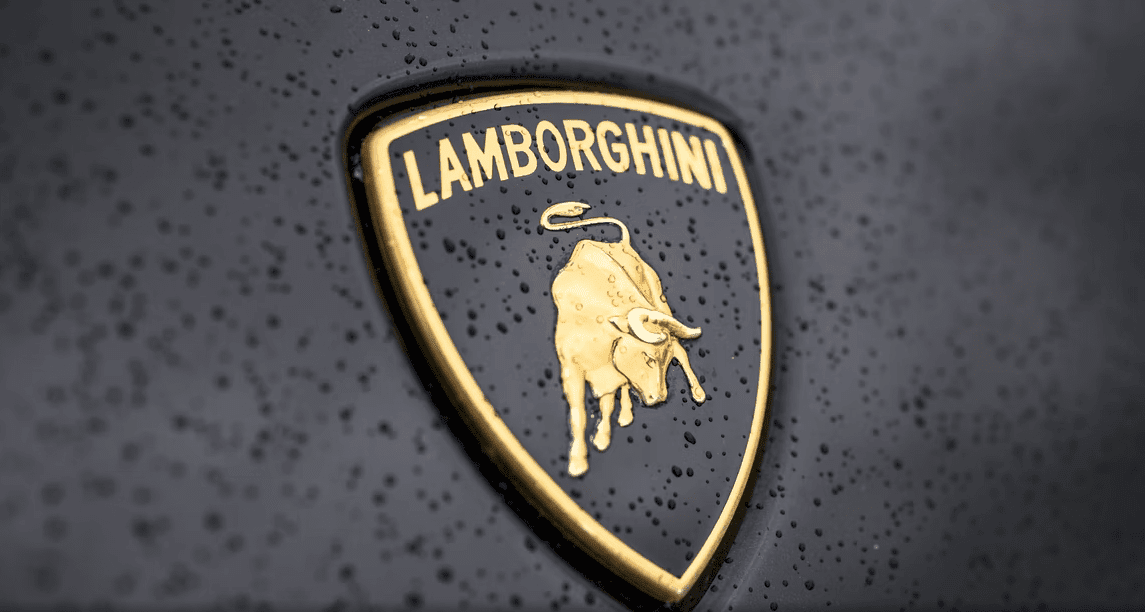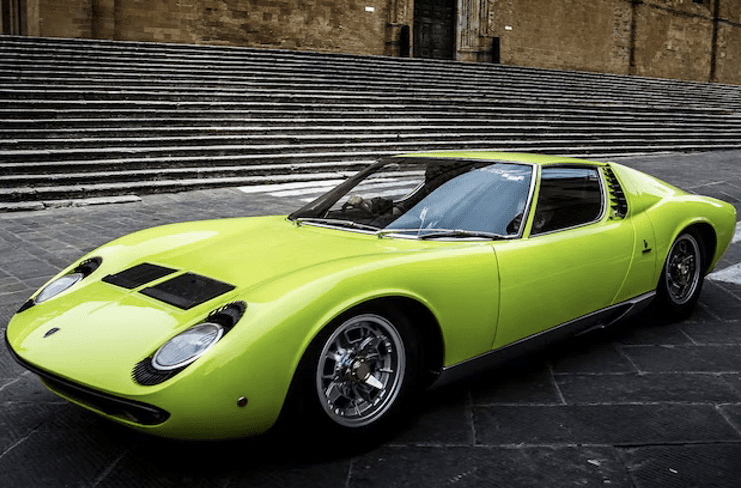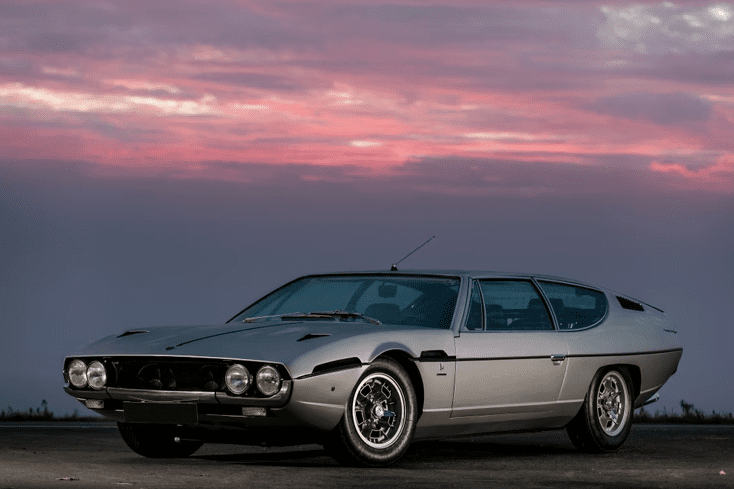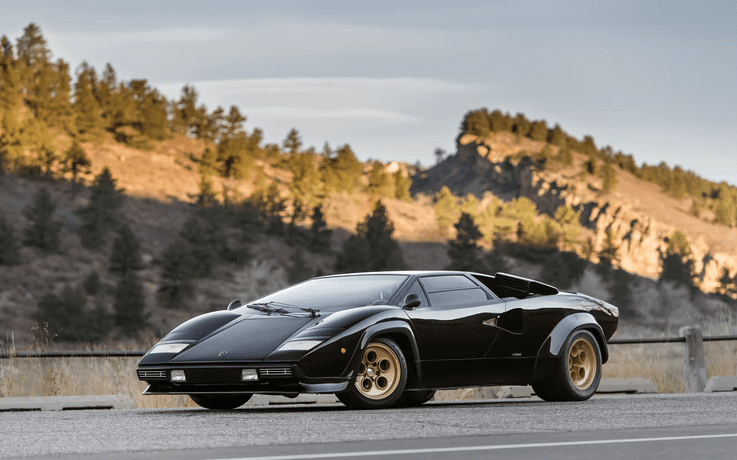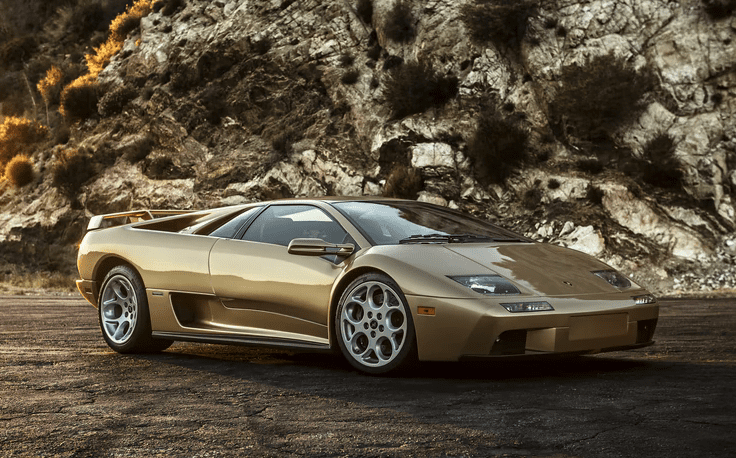How did this Italian tractor company become one of the best supercar makers in the world?
Out of all the car companies in the world, arguably Lamborghini has the most interesting history out of all of them. Lamborghini began as a tractor company in Italy and is now considered to be one of the best supercar manufacturers in the world. But why did Lamborghini make and switch, and is it still involved in the amazing world of tractors?
After the end of the Second World War, Ferruccio Lamborghini began making tractors with spare parts from military vehicles. He also invested in the manufacturing of air conditioning systems and became wealthy because of his various business ventures. And with all this money, Lamborghini began to buy high quality sports cars, such as Ferraris.
In 1963 however, Lamborghini had a problem with the clutch disc in his Ferrari and he went to complain to Enzo Ferrari himself. Ferrari was dismissive of Lamborghini’s claims and said that “the problem is not with the car, but rather, the driver.” This did not sit well with Lamborghini, who decided to take apart the Ferrari’s transmission. Discovering that it had the same transmission as his tractors, Lamborghini began development of a new sports car to rival Ferrari.
1964 Lamborghini 350 GT
The Lamborghini 350 GT, introduced in 1964, marked a significant milestone in Lamborghini’s journey into the world of automotive excellence. This elegant and powerful grand tourer served as Lamborghini’s first production car, laying the foundation for the brand’s future success and innovation.
Boasting a lightweight aluminum body, the 350 GT exuded a timeless elegance that appealed to discerning Italian consumers seeking a luxurious yet thrilling driving experience. Underneath its sleek exterior, the 350 GT housed a remarkable 3.5-liter V12 engine, delivering exhilarating performance that left a lasting impression on those fortunate enough to get behind the wheel. With its 4-wheel independent suspension, the 350 GT offered impeccable handling and a smooth ride, further enhancing its desirability among automotive enthusiasts.
Wealthy Italian consumers were captivated by the arrival of the Lamborghini 350 GT, as it presented them with a new and enticing option in the automotive landscape. Lamborghini’s commitment to craftsmanship, performance, and luxury resonated with this audience, solidifying the brand’s position as a formidable player in the automotive industry.
Building upon the success of the 350 GT, Lamborghini introduced the 400 GT, featuring an upgraded 4.0-liter V12 engine. This model further showcased Lamborghini’s dedication to pushing boundaries and raising the bar for performance and engineering excellence.
However, it was the introduction of the Lamborghini Miura that truly set the stage for Lamborghini’s meteoric rise to automotive greatness. The Miura’s revolutionary mid-engined design, stunning aesthetics, and unmatched performance captured the hearts and imaginations of car enthusiasts worldwide. It became a symbol of Lamborghini’s unwavering commitment to pushing the boundaries of automotive innovation and delivering exceptional driving experiences.
The Miura’s profound impact on the automotive industry cannot be overstated. It redefined the concept of the supercar, establishing Lamborghini as a force to be reckoned with in the world of high-performance automobiles. The Miura’s legacy lives on in subsequent Lamborghini models, each carrying the spirit of innovation and excellence that began with the 350 GT and culminated in the awe-inspiring Miura.
Today, Lamborghini stands as a pinnacle of automotive engineering and design, continuously pushing boundaries and captivating enthusiasts with their bold and exhilarating creations. The 350 GT, with its lightweight body, powerful V12 engine, and refined craftsmanship, set the wheels in motion for Lamborghini’s incredible journey. It paved the way for the brand’s enduring legacy and solidified Lamborghini’s place as an icon in the automotive world.
Lamborghini Miura
In 1966, Lamborghini unleashed a groundbreaking masterpiece upon the automotive world – the Miura. This stunning supercar captivated enthusiasts and enthusiasts alike, revolutionizing the industry and cementing Lamborghini’s status as a formidable player in the realm of exotic car manufacturers.
The Lamborghini Miura was an automotive sensation, instantly capturing the hearts and desires of car enthusiasts worldwide. Its sleek and seductive design, penned by Marcello Gandini of Bertone, set a new benchmark for automotive aesthetics. The low, aggressive stance, sculpted body lines, and distinctive “flying buttress” rear pillars all contributed to the Miura’s irresistible allure.
What truly set the Miura apart, however, was its groundbreaking mid-engined configuration. This pioneering design placed the powerful V12 engine behind the driver, delivering exceptional weight distribution and handling dynamics that had never been seen before. The Miura’s mid-engined layout became a defining feature of future supercars, setting a trend that continues to shape the industry to this day.
The Miura’s performance matched its stunning looks. Powered by a transversely mounted 3.9-liter V12 engine, it produced an impressive 350 horsepower, propelling the car to a top speed of around 170 mph (275 km/h). The exhilarating acceleration and thrilling driving experience offered by the Miura captivated automotive enthusiasts, solidifying its status as a true icon.
With the introduction of the Miura, Lamborghini joined the elite club of exotic car manufacturers, standing shoulder to shoulder with other legendary brands in the industry. The Miura’s success elevated Lamborghini’s reputation, firmly establishing the brand as a force to be reckoned with. Lamborghini had arrived, and it was here to stay.
The Miura’s influence extended far beyond its own era. Its groundbreaking design and mid-engined layout inspired countless supercars that followed, setting a standard that still resonates in the automotive world today. The Miura’s legacy can be seen in the subsequent Lamborghini models, such as the Countach, Diablo, and Aventador, all of which carry the spirit of innovation and performance that the Miura pioneered.
Decades later, the Lamborghini Miura continues to be regarded as one of the most beautiful and influential cars ever created. Its timeless design, revolutionary engineering, and captivating performance have secured its place in the annals of automotive history. The Miura not only solidified Lamborghini’s place in the automotive world but also left an indelible mark on the hearts and minds of enthusiasts.
Lamborghini Espada
During the same period as Lamborghini’s groundbreaking models, another noteworthy car emerged from the Italian manufacturer: the Lamborghini Espada. Introduced in 1968, the Espada offered a unique blend of luxury, performance, and practicality, making it a standout among Lamborghini’s iconic lineup.
The Lamborghini Espada departed from the mid-engine configuration typically associated with Lamborghini, opting instead for a more conventional front-engine layout. Powering the Espada was a formidable 4.0-liter V12 engine, delivering an exhilarating driving experience combined with the signature Lamborghini soundtrack.
What set the Espada apart from its counterparts was its four-seat grand touring design. While Lamborghini was renowned for its high-performance sports cars, the Espada offered a level of versatility that appealed to those seeking a balance between performance and practicality. With its spacious cabin and comfortable seating for four, the Espada allowed drivers and passengers to embark on exhilarating journeys in luxury and style.
The Espada’s distinctive design language showcased Lamborghini’s commitment to pushing boundaries and challenging automotive norms. Its sleek and elongated body featured clean lines and a striking profile, capturing attention wherever it roamed. The interior was meticulously crafted, offering a blend of opulence and performance-focused elements that further exemplified Lamborghini’s commitment to excellence.
While the Espada and other cars of its kind may have been temporary in comparison to Lamborghini’s later successes, they played a significant role in the evolution of the brand. The Espada showcased Lamborghini’s ability to diversify its offerings and cater to a broader range of drivers and enthusiasts. It demonstrated the brand’s versatility, proving that Lamborghini was not confined to a single type of sports car but could excel in various segments.
The success of the Espada paved the way for Lamborghini’s future additions to its lineup, including the introduction of the legendary Countach in the 1970s. The Espada’s influence on Lamborghini’s design philosophy and its impact on the brand’s trajectory cannot be overstated. It played a pivotal role in shaping Lamborghini’s identity as a manufacturer of breathtakingly powerful and stylish automobiles.
Today, the Lamborghini Espada continues to hold a special place in automotive history, revered by enthusiasts for its unique combination of performance, luxury, and practicality. It remains a testament to Lamborghini’s commitment to pushing boundaries and redefining the possibilities of automotive engineering.
Lamborghini Countach
The Lamborghini Countach, an automotive icon that continues to captivate enthusiasts to this day, was indeed adored for its revolutionary styling and influence on Lamborghini’s design language. This legendary supercar not only pushed the boundaries of automotive aesthetics but also set a precedent for the mid-engined layout that has become synonymous with Lamborghini.
With its wedge-shaped body, aggressive lines, and futuristic presence, the Countach made an indelible mark on the automotive industry. Its striking design, sculpted by the renowned Marcello Gandini of Bertone, became a defining characteristic of Lamborghini’s visual identity. The bold and angular aesthetic of the Countach paved the way for the distinctive style that is still prevalent in Lamborghini models today.
In addition to its groundbreaking design, the Countach introduced several innovative features that would become hallmarks of future Lamborghini cars. The iconic scissor doors, hinged at the roof and swinging upward, added a touch of drama and sophistication to the Countach’s entrance. The rear-mounted air intakes not only provided functional cooling for the engine but also became an iconic design element that is still prevalent in modern Lamborghinis.
While the Countach brought significant success to Lamborghini, the company faced a major financial setback in 1972. The anticipation of a massive tractor order from a South American country led Lamborghini to expand its production capabilities in its tractor factories. However, the order never materialized, leaving Lamborghini burdened with the cost of upgrading its production facilities without the expected return.
To mitigate the financial strain, Lamborghini made the difficult decision to sell its tractor division to Fiat Tractors, ensuring the continuity of its agricultural machinery production. Subsequently, the tractor division was acquired by the SAME Deutz-Fahr Group, maintaining its presence in the industry.
Despite the challenges faced by Lamborghini during this period, the company persevered and focused on its core strength—building extraordinary sports cars. The Countach, along with subsequent models such as the Diablo, Murciélago, and Aventador, exemplified Lamborghini’s commitment to pushing boundaries and delivering exhilarating performance.
Today, Lamborghini stands as a symbol of automotive excellence, with its breathtaking designs and awe-inspiring performance. The Countach’s legacy lives on, not only in its own enduring popularity but also in the continued evolution of Lamborghini’s design philosophy. The setbacks faced in the 1970s served as valuable lessons, driving Lamborghini to innovate and establish itself as a premier luxury sports car manufacturer.
Through determination and a relentless pursuit of automotive perfection, Lamborghini has solidified its position as a revered brand, embodying the spirit of audacity, power, and uncompromising performance. The challenges faced in the past have only fueled Lamborghini’s unwavering commitment to delivering automotive masterpieces that capture the hearts and imaginations of enthusiasts around the world.
Lamborghini Diablo
In the 1970s, the global oil crisis presented significant challenges for Lamborghini, leading to the company’s bankruptcy declaration in 1978. However, the brand’s resilience and enduring appeal attracted the attention of the Swiss Mamran brothers, who acquired what remained of Lamborghini in 1984. They later sold the company to Chrysler in 1987, marking a new chapter in Lamborghini’s history.
Under Chrysler’s ownership, Lamborghini introduced the iconic Diablo, which became a worthy successor to the legendary Countach. The Diablo carried on the tradition of the mid-engined layout and captured the imagination of automotive enthusiasts with its striking design and exhilarating performance.
In 1994, Lamborghini underwent another change in ownership, as the Indonesian company Megatech acquired the brand. This period saw further advancements for Lamborghini, including the introduction of the Diablo SV in 1995, which featured updates and improvements over its predecessor. It was during this time that Lamborghini also embraced all-wheel drive technology, enhancing the performance and handling capabilities of its cars.
In 1997, Lamborghini found its new home under the ownership of Audi, a subsidiary of the Volkswagen Group. This acquisition provided Lamborghini with the resources and stability needed to continue its legacy of excellence. Under Audi’s guidance, Lamborghini continued to push the boundaries of automotive innovation, delivering awe-inspiring supercars such as the Murciélago.
While maintaining its commitment to producing mid-engined supercars, Lamborghini also expanded its horizons in the 21st century. The brand ventured into the SUV market with the introduction of the Lamborghini Urus, combining the performance and luxury expected from Lamborghini with the practicality and versatility of an SUV.
Today, Lamborghini remains under the ownership of Audi, continuing its tradition of creating extraordinary automobiles that captivate enthusiasts worldwide. With each new model, Lamborghini pushes the boundaries of performance, design, and technology, embodying the spirit of innovation and excitement.
There is no denying that Lamborghini’s journey has been filled with twists and turns, but throughout its storied history, the brand has consistently delivered cars that embody the essence of automotive passion and performance. As Lamborghini looks towards the future, there is no doubt that the brand will continue to captivate the world with its relentless pursuit of excellence, ensuring that the spirit of innovation and the allure of Lamborghini live on for generations to come.
Sources: The History of Lamborghini (cars-directory.net) and A Brief History of Lamborghini – Autotrader and Luxury car magnate Ferruccio Lamborghini is born – HISTORY
FAQ: Lamborghini and Porsche
How much does a Lamborghini cost?
The cost of a Lamborghini can vary depending on the model, trim level, optional features, and other factors. Lamborghini cars typically range from around $200,000 to several million dollars for their high-performance, limited-edition models.
What is faster, a Lamborghini or a Porsche 911?
In terms of top speed and acceleration, it depends on the specific models being compared. Both Lamborghini and Porsche produce high-performance sports cars, and certain Lamborghini models, such as the Aventador, may have higher top speeds than some Porsche 911 variants. However, Porsche 911 models, especially the Turbo and GT variants, are known for their impressive speed and agility.
Is Porsche faster than Lamborghini?
The speed of a car depends on the specific models being compared. While some Lamborghini models may have higher top speeds than certain Porsche models, Porsche is renowned for its engineering precision, performance, and handling characteristics. Porsche vehicles, including the 911 Turbo S and 918 Spyder, have achieved remarkable speed and acceleration.
Why is Porsche better than Lamborghini?
The comparison between Porsche and Lamborghini depends on individual preferences and priorities. Porsche is often regarded for its engineering excellence, track record in motorsports, and precise handling characteristics. Porsche vehicles are known for their driver-focused performance and everyday usability, making them a popular choice among sports car enthusiasts. Lamborghini, on the other hand, is renowned for its exotic and dramatic styling, exhilarating performance, and a strong presence. Ultimately, the choice between the two brands comes down to personal preference.
Is Lamborghini nicer than Ferrari?
The preference between Lamborghini and Ferrari depends on individual tastes and preferences. Both brands have their unique characteristics and a loyal fan base. Lamborghini cars are known for their aggressive and attention-grabbing designs, while Ferrari vehicles are often associated with elegance, refined performance, and a rich racing heritage. Ultimately, the choice between Lamborghini and Ferrari comes down to personal style and the driving experience one seeks.
Who is faster, Lamborghini or Ferrari?
The speed of a car depends on the specific models being compared. Both Lamborghini and Ferrari produce high-performance vehicles capable of achieving impressive speeds. Certain Lamborghini models may have higher top speeds than some Ferrari models, but the speed and performance capabilities can vary among different models within each brand.
What is the fastest car on Earth?
The fastest car on Earth is currently the SSC Tuatara, a hypercar that achieved a top speed of 331.15 mph (532.93 km/h) during a recorded high-speed run in 2020. It surpassed the previous record held by the Bugatti Veyron Super Sport.
Which is the best car in the world?
The title of the “best car in the world” is subjective and can vary depending on individual preferences and criteria. Various cars are often considered contenders for the title, including high-performance sports cars, luxury sedans, and electric vehicles. Factors such as design, performance, technology, comfort, and brand reputation play a role in determining the best car for each individual.
How much is the cheapest Lamborghini?
The cheapest Lamborghini available today is the Lamborghini Urus, an SUV model. The base price of the Urus starts around $200,000. It is worth noting that additional options and customization can increase the overall price of the vehicle.

